Heather Hanson
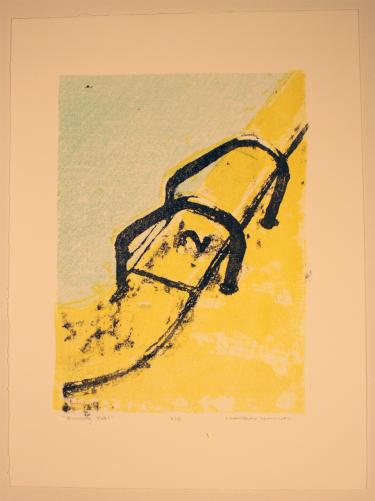
Burnsley Pool
Burnsley Pool is based on the respite atop Denver’s Burnsley Hotel. Built in 1963, the Burnsley at 1000 Grant Street in Denver, was originally intended as apartment residences. Six years later it was converted to a luxury hotel by investors that included Ella Fitzgerald and Kirk Douglas. The 17-story modern Capitol Hill icon featured a popular jazz club. Again converted to private residences in 2012, the rooftop pool still functions as a popular community amenity.
Burnsley Pool was inspired by British pop artist David Hockney. Hockney painted several pools, beginning in the 1964 Burnsley time frame, often representing modern architecture. Using the new medium of acrylic, Hockney would continue his obsession with pools throughout the 60s and the 70s. The colors in Burnsley Pool are a nod to Hockney’s seminal hues.” Student Arts Program official selection 2019. Located on the third floor, near room 358
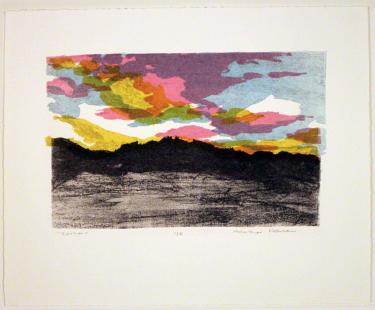
Earlier
"Between Eldorado and Boulder Canyons, Earlier is inspired by the dramatic colors of the sunrise. Colors that can only be glimpsed by rising earlier than the sun.” Student Arts Program official selection 2019. Located on the third floor, near room 355.
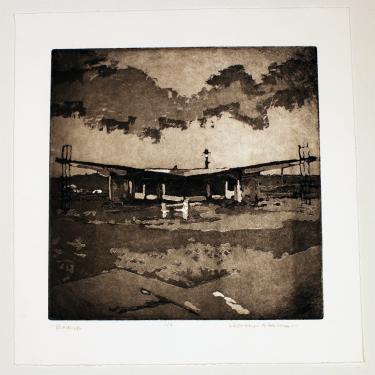
Rawlins
“Twentysix Gasoline Stations is considered the first artist’s book. Created in 1963 by Edward Ruscha, the book contained no text and would be rejected by the Library of congress citing its ‘unorthodox form and supposed lack of information.’ Ruscha’s intent with this series was to approach his subjects without emotion or explanation. Precluded by Edward Hopper, Gas from 1940, also does not possess the objective to put forth any narrative or emotion, rather, it is a ‘intimate transcription’ of the American landscape. The station represented in Rawlins embodies the spirit of this wind-blown Wyoming town. Just off the 80 interstate, the station is a whisper of a more industrial petroleum fueled era, having just past.” Student Arts Program official selection 2019.
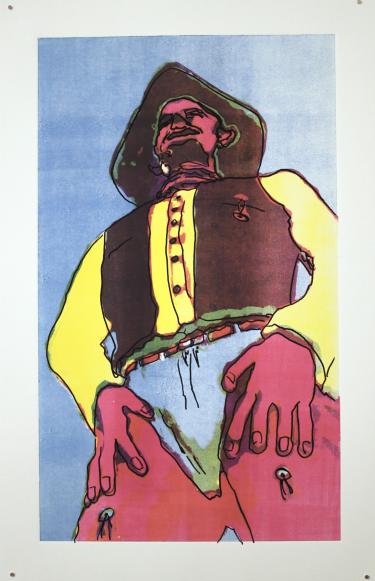
Tall Tales No. 1
Tall Tales No. 1 is part of a series of gigantic icons found towering over the contemporary landscape. In the west, where the biggest is celebrated, and we are witness to the grandiose, the manufactured idolization of the western cowboy is prolific. The modern legend of the cowboy, fostered by filmmaker John Ford, wild west shows and dime store novels, does precious little to reflect the true brutality of the western frontier. Tall Tales explores the condition of ‘that which is often not what it seems.’
The western cowboy is a western deity embodied by this monumental concrete cowboy. Intended for a theme park in the 1950s, the ‘concrete cowboy’ creator John Sutton specialized in large cement displays for zoos and parks in Denver and the Bronx. It’s actual placement is located at the entrance of the Rustic Ranch Trailer Court along Highway 287 on Denver’s Federal Blvd. It is the first landmark I oriented myself with upon arriving to the city. The gigantic sculpture dwarfs the caravans that surround it in a joyful dichotomy. The enormous 30-foot icon intimates memory of fanciful kitsch that signals the traveler to stop. Mythology and mysticism for those who settle.” Student Arts Program official selection 2020. Located at the Student Recreation Center near room A146.
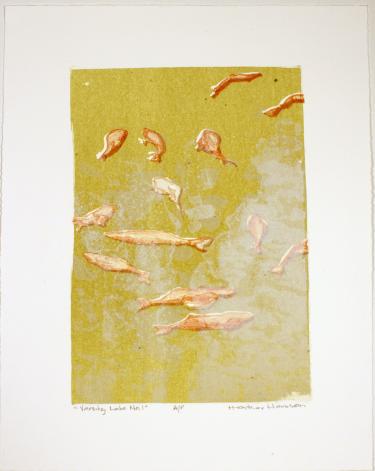
Varsity Lake No. 1
“Varsity Lake, on the northwest corner of the University of Colorado Boulder campus, is home to several large koi. Alan Nelson, CU Boulder groundskeeper, indicates the colorful fish were placed by random peoples unknown. One can reflect on their patterns and graceful movements most days of the year.
The image of the koi fish is used extensively in Asian art. Koi were bred by the Chinese and more rigorously by the Japanese in the 1600s. They are of significant symbolism to the Japanese and are used in the spiritual Chinese practice of Feng Shui. The koi fish is symbolic of good fortune, luck and prosperity in Japan. Agents of endurance and perseverance associated to worldly ambition and achievement. Persistence, tenacity and determination required to pursue knowledge with fervor. In this respect, the fish in Varsity Lake No.1 are well placed.”
Student Arts Program official selection 2019. Located on the third floor, near room 380.
About the Artist
Heather Hanson studies studio arts, art history and French in the CU Boulder School of Art and Sciences. Heather is a western artist working out of Golden, Colorado. Her work contemplates American iconography, our disappearing surroundings, coincidence, happenstance and the road. Residing at 8100 feet, in the tri-county community of Coal Creek Canyon, Heather volunteers with her local fire-mitigation non-profit. The environmental is an underlying element to much of Heather’s imagery. Heather’s prints have been recently exhibited in Colorado, Kansas, Wyoming and New Mexico. See more of Heather’s work at heatherhanson.art. By clicking the preceding link, you are leaving colorado.edu. We are not responsible for the content of any linked site or any link contained in a linked site.

